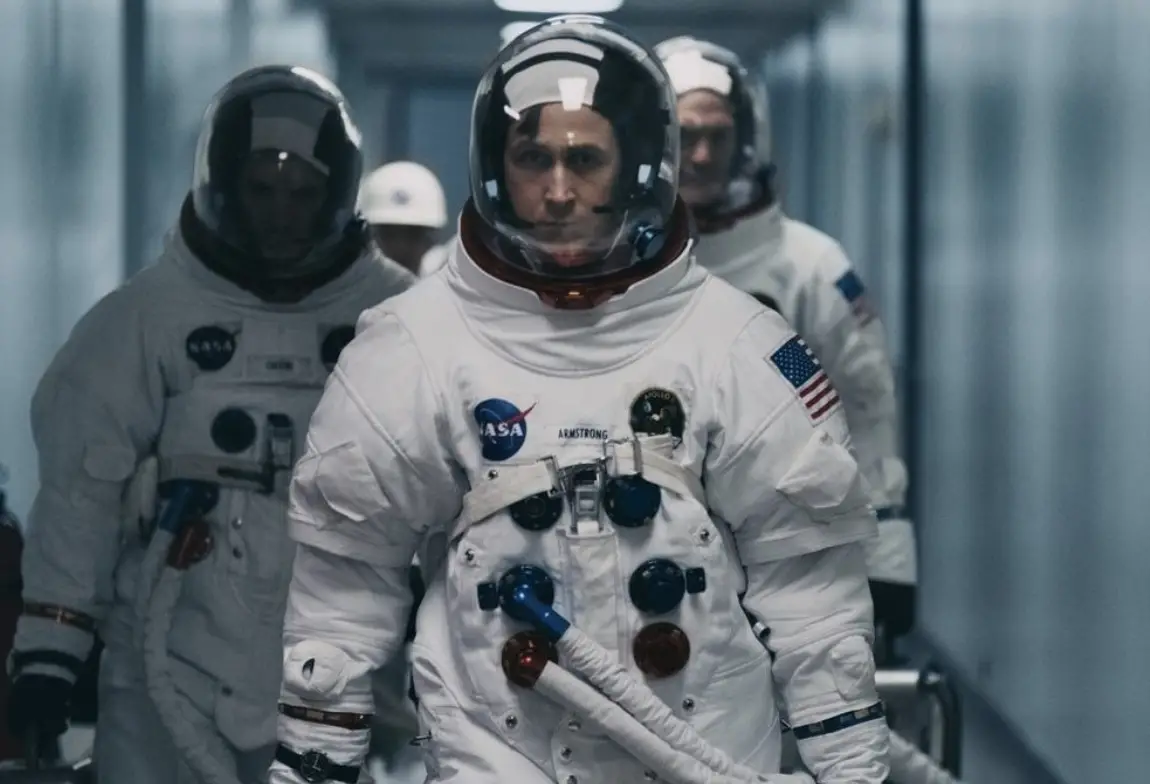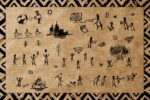In the last five years, Damien Chazelle has directed and written some of the greatest films of the decade, most notably “Whiplash” and “La La Land.” Recently, Chazelle partnered with Ryan Gosling on the film “First Man,” a biographical piece about Neil Armstrong and the mission to the moon.
Despite the (mostly) positive reviews, “First Man” wasn’t what I expected, to say the least.
The film starts off in 1961, with Neil Armstrong (Ryan Gosling) flying a plane out of the atmosphere. The plane, however, malfunctions, but Armstrong manages to quickly maneuver it back in place and crash in the middle of the Mojave Desert. Armstrong’s colleagues seem disappointed with his performance, but they have reason to believe he might not have been performing at his peak; after all, Armstrong’s youngest daughter, Karen, has a brain tumor.
The film then shifts focus to show Armstrong’s desperate attempts to save Karen, but quickly conveys that his efforts weren’t enough; she soon passes away. Armstrong, in his mourning, tries to find a way to cope, and manages to do so by jumping quickly back into work and deciding to apply for NASA’s Project Gemini.
Once Armstrong receives the news that he has been accepted into the astronaut group for Project Gemini, he relocates himself and his family to Houston where, shortly after moving, Armstrong and his wife, Janet (Claire Foy), have another son, Mark.
While training for missions and learning aerospace knowledge, Armstrong has frequent flashbacks of Karen. He tries not to let it impact his performance, so in order to compensate, he ends up pushing himself harder. Five years later, he is rewarded for his compensation; Armstrong ends up being chosen as the commander for Gemini 8, one of the training missions that happens before the main event: Apollo.
After completion of the Gemini missions, NASA begins the deployment of the first Apollo mission. During this, however, a fire left astronauts Ed White (Jason Clarke), Gus Grissom (Shea Whigham), and Roger Chaffee (Corey Michael Smith) to die, which ultimately drew a lot of media attention on NASA and raises questions as to whether space exploration was worth the cost, and whether taxpayer money should be spent on sending men into space.
The film then jumps to a year later, during the time of the Apollo 11 mission, and this time, Armstrong is onboard with a new crew. Although Armstrong doesn’t leave his family on a good note, he ends up seeing the mission to success — Armstrong and Buzz Aldrin (Corey Stoll) manage to make it to the moon. Before Armstrong leaves, his parting gift for the moon is Karen’s beaded bracelet. The mission is completed once Armstrong and Aldrin head home to their families and confinement.
Overall, “First Man” did have its flaws, but I think it was telling a different story than what people were expecting.
The plot wasn’t always going at a consistent pace. There would be a 30 second scene with Armstrong and Karen, and then in a blink of an eye, it would be Karen’s funeral. But then, there would be scenes on the rocket for upwards of two minutes. The scenes that showed the view from the rocket and Armstrong on the rocket were often shaky and silent. They lacked the character development that was necessary, especially since Chazelle wanted to focus on Armstrong’s personal struggles.
The time leaps also happened too frequently and seemed to skip events that were important in the actual space race story. If this movie didn’t include the titles with the location or date; I don’t think anyone would have been able to tell what was happening in the story.
Chazelle could have gone two routes with this movie — either focus on the science and mission to the Moon in a documentary-esque style, or work on a “based off a true story” and a profile to truly focus on character development. In this case, Chazelle mixed both styles but didn’t do either of them justice.
Although I found the pace of the story to be inconsistent, I do think that the quality and creation of some cinematic sequences, especially with the rocket launches and the scenes on the moon were spectacular.
Typically, most films at this scale would use only CGI to create the scenery, but Chazelle and his team decided to use a mix of digital effects and miniature models to complete the task. In “First Man,” when the spacecraft initially landed on the moon, the spacecraft was a miniature, real-life model, but was then exported to a digital background. This allowed for a more authentic rocket to fit that time period. When you see films that take place in a past time with high-definition special effects, they don’t always correlate and have an appropriate setting.
Along with the miniature models, the “First Man” production team also decided to print 3D models of some of the rockets for which they had actual NASA blueprints. The Saturn V Rocket that was featured in the film was one of the few 3D models used. Once the models were created, it was easy to maneuver them digitally, and again, rough them up a bit to make it look like a rocket out of the ’60s.
For the moon itself, Chazelle and his team scouted locations, and found that the Vulcan Rock Quarry near Atlanta could be a stand-in for the moon. The moon environment could have been created virtually, but having an actual, nature set built the authenticity of the film.
Despite having no experience with visual effects and production sets, Chazelle knew what he needed to do in order to accurately tell the story he wanted to tell. Lack of computer effects allowed for the film to stay true to the 1960s time period. Even though the visual effects shined, Chazelle received criticism about “First Man” overall, especially on his choice to omit the American flag planting on the moon.
During an interview with The Los Angeles Times, Chazelle said that the controversy was unexpected: “‘It surprised me because there are so many things that we weren’t able to focus. Just by the nature of the story we were telling, we just couldn’t go into every detail.’”
For some, “First Man” was seen as another epic tale about America’s mission to the moon. For Chazelle, it was an intimate story about Neil Armstrong and how he grew individually from the Apollo 11 mission.
It’s a common tale; the public wants to see the classics under a modern-day light, but Hollywood wants to look at the classics with a different lens.
Many people before seeing “First Man” were probably expecting a great deal of patriotism and a film like Ron Howard’s “Apollo 13.” Instead, they were delivered a visually appealing, personal film about what wasn’t shown in the media; Neil Armstrong’s personal battle he fought during the time he went to the Moon.
“First Man” was an artistic film that told the more poignant story about Neil Armstrong. At the end of the day, Chazelle’s “First Man” was a movie that (quite literally) was shooting for the Moon but ended among the stars.
















